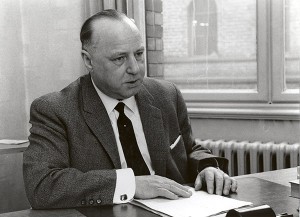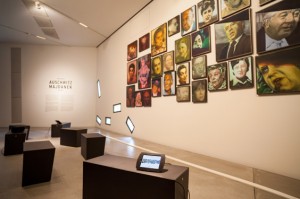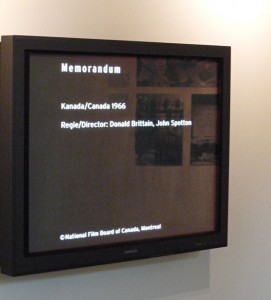… the Auschwitz Trial Began 50 Years Ago Today
On 20 December 1963, Federal Germany’s largest and longest-lasting trial to date of crimes committed in National Socialist concentration and extermination camps opened in the council chamber of Frankfurt’s Römer, the city hall. On trial were twenty-two former staff members who had worked between 1941 and 1945 at the Auschwitz concentration camp. The highest-ranking defendant and last commandant of the camp, Richard Baer, had died just before the trial began. Many others did not face charges at all, not least because almost all crimes dating from the Nazi era were already time-barred—even homicide.

Hans Hofmeyer
© Schindler‐Foto‐Report
Since the Federal German legislature had not anchored the Allies’ postwar trials in Federal German law, trial proceedings in Frankfurt am Main—and likewise all subsequent trials of Nazi crimes—were based on the Penal Code of 1871. Consequently the only charges made were those of murder, and of aiding and abetting murder; and the court, under the guidance of the presiding judge Hans Hofmeyer, was accordingly obliged to find whether defendants had been personally involved in acts of murder, that is to say, had broken the law. → continue reading

Area on the Majdanek Trial in the permanent exhibition
© Jewish Museum Berlin, photo: Alexander Zuckrow
Forty-four portraits have been mounted in the permanent exhibition over the last few weeks. They are a series of paintings by Minka Hauschild, called “Majdanek Trial Portraits,” and they show the participants of the Majdanek Trial, that took place at the regional court in Dusseldorf from 26 November 1975 until 30 June 1981. Standing in front of the wall of portraits, viewers are left to wonder: “Who is who, here?” The paintings themselves don’t reveal whether the subject was a former prisoner or an SS officer. Some portraits are realistic, but others seem distorted or blurred to the point of being unrecognizable. All of the people portrayed appear to have been damaged in some way. The portraits are deeply disturbing.
Our visitors can find out on iPads lying on the benches nearby whether a given painting depicts a judge, a lawyer for the defense, a witness, or a defendant. Each individual’s role in the Majdanek trial is described here and insight is provided into their biography as well as – where the sources permit – their own perception of the proceedings. → continue reading
 A police siren blares through the last rooms of the permanent exhibition. The source of the alarming noise is a film excerpt being displayed on a large screen.
A police siren blares through the last rooms of the permanent exhibition. The source of the alarming noise is a film excerpt being displayed on a large screen.
This section of the exhibition is about the Frankfurt Auschwitz trial that took place from December 1963 until August 1965. Former SS members of the Auschwitz concentration camp authority were tried for murder or for aiding and abetting murder. The litigation is regarded as a turning point in the way the National Socialist past was dealt with in the new Federal Republic. → continue reading


